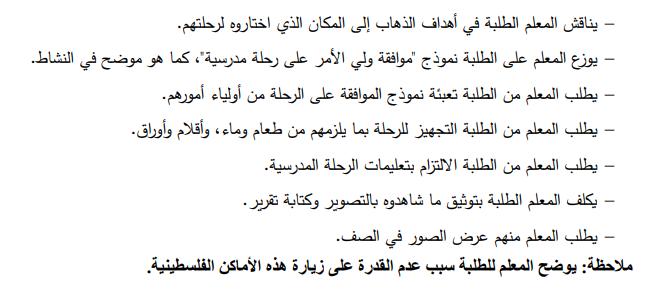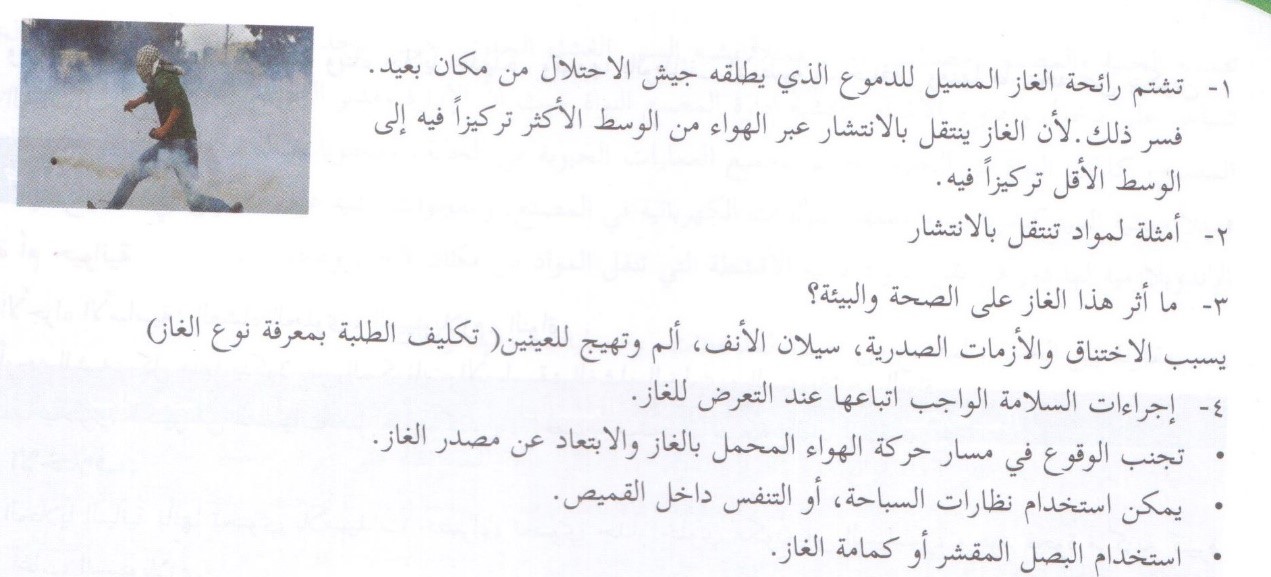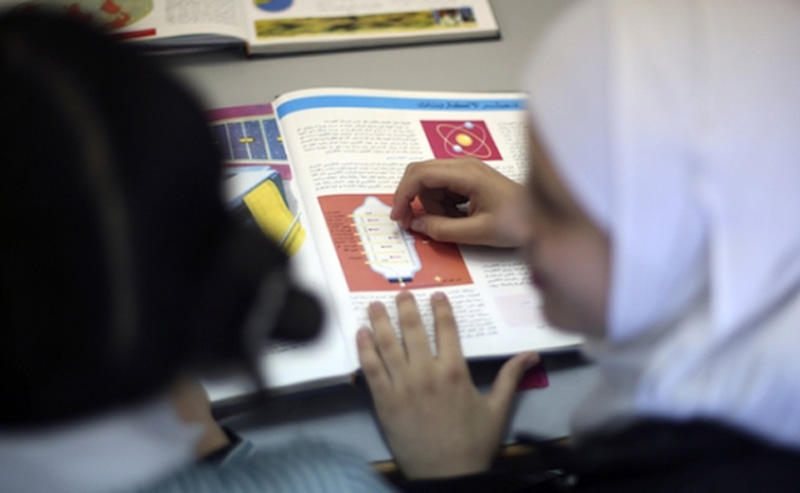(January 2019)
- Indoctrination in a Nutshell for Grade-2 Students:
“Preparation: The Teacher will tell a short story about our homeland, Palestine: ‘My grandfather used to live in a beautiful village in [the area of] Haifa. He was working in agriculture, loving the land and guarding it. On a sad day alien faces came in order to expel my grandfather from his land, burn what he had sown and force him to emigrate to distant lands.”

(Our Beautiful Language, Grade 2, Part 2 (2018) p. 53)
- Indoctrination through the Experience of Personal Frustration:
Grade 3 students are instructed to prepare themselves for a trip and, then, they are told that they cannot go to the place they had chosen to visit in Palestine:
“…
-The teacher will discuss with the students the goals of visiting the place they have chosen for their trip.
-The teacher will distribute among the students a form of parental consent to a field trip as appearing in the activity [text].
-The teacher will ask the students that their parents fill in the trip’s consent forms.
-The teacher will ask the students to prepare for the trip the food and water they would need, as well as pens and paper sheets.
-The teacher will ask the students to follow the field trip’s regulations.
-The teacher will assign the students with [the task of] documenting what they would see by taking pictures and writing a report.
-The teacher will ask them to show the pictures in class.
Note: The teacher will clarify to the students the reasons why they cannot visit the places they have chosen in Palestine.”

(National and Social Upbringing, Grade 3, Part 2 (2016) p. 64)
- The Jewish Wailing Wall is Made a Principal Islamic Holy Place:
According to Muslim belief, Prophet Muhammad miraculously traveled from Mecca to Jerusalem riding a heavenly winged beast named Al-Buraq, which he tied to the Wailing Wall upon ascending to Heaven from Jerusalem’s Temple Mount. The Wall thus became holy to Muslims under the name Al-Buraq, but it has never been equal in sanctity to Al-Aqsa Mosque and the Dome of the Rock. The following piece presents it as such, probably as part of the PA’s effort to counter the Jews’ claim to that place. It should be noted that Muslims used to recognize in the past the Wall’s holiness to Jews under another Arabic name – “the Wall of the Mourning Place (Hait al-Mabka)”, since only Jews would mourn there – but this is not the name used in the following piece:
“The teacher will prepare a number of paper slips in which he will write the [names of the] most important sites and holy places located in Jerusalem (Al-Aqsa Mosque, the Dome of the Rock, Mosque of Umar, Al-Buraq Wall, the Church of the Holy Sepulcher, and the names of some of Jerusalem’s gates) and will ask the students to select a slip, which he will open and read what is in there. The teacher will speak about any site and place appearing in those paper slips, will show a video film about Jerusalem, its wall and gates and the holy places therein.”

(Islamic Education, Grade 3 (2018) p. 68)
- Anemone Flowers as a symbol of Palestinian martyrs – An Iranian cultural Influence?
Red tulips have been considered in Iran for decades a symbol of Iranian martyrs. The following piece similarly connects Palestinian martyrs with the local anemone flowers, a theme that has never been encountered so far in PA schoolbooks and other curricular material. Does this indicate a recent Iranian educational influence on the PA curriculum?
“…In Palestine, this red flower symbolizes martyrdom and sacrifice. Anyone who looks at any place in our country will see the anemone flowers who will whisper in his ear saying: ‘Here a martyr has fallen and watered my soil with his blood. How many the anemone flowers are in our country!'”

(Our Beautiful Language, Grade 4, Part 1 (2018) p. 15)
- Practices against Tear Gas:
“1. The tear gas that is discharged by the occupation army is smelled from afar. Explain that. [The answer:] Because the gas spreads through the air from the place where it is more concentrated to the place where it is less concentrated.
- Examples of [other] materials that spread [similarly].
- What is the impact of this gas on [one’s] health and the environment?
[Answer:] It causes asphyxiation and pectoral crises, catarrh and pain and cauterization in the eyes (the students will have to know the gas’s type)
- Safety measures that should be followed when exposed to gas:
-Avoid staying in the way of the air that carries the gas; stay away of the gas’s source.
-It is possible to use swimming goggles, or breath through the shirt.
-Use a peeled onion, or a gas mask.”

(Science and Life, Grade 8 (2018) p. 178)









